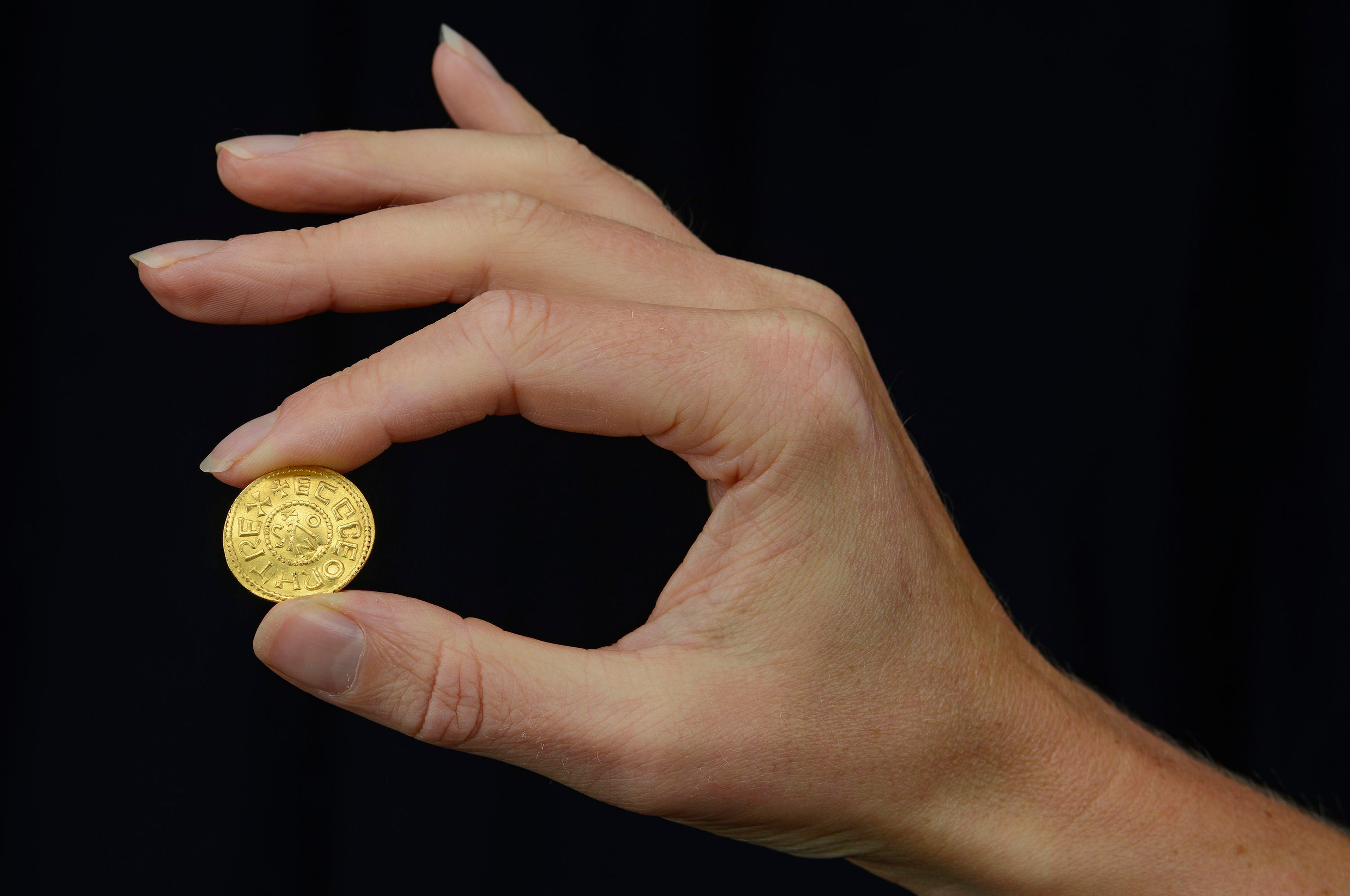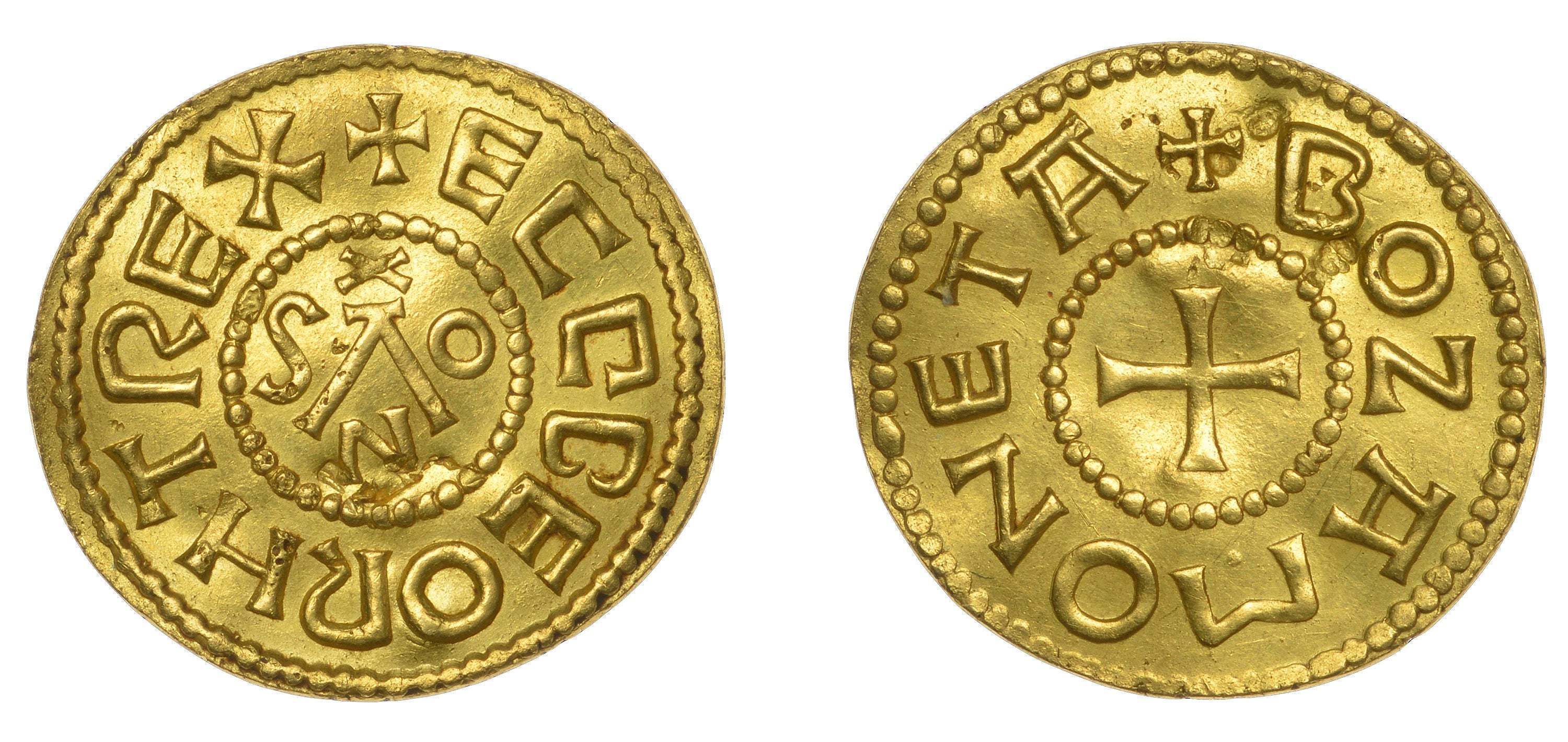Rare Anglo-Saxon gold coin found in Wiltshire valued at £200,000
Treasure likely to have come from West Saxon mint, possibly Southampton or Winchester

Your support helps us to tell the story
From reproductive rights to climate change to Big Tech, The Independent is on the ground when the story is developing. Whether it's investigating the financials of Elon Musk's pro-Trump PAC or producing our latest documentary, 'The A Word', which shines a light on the American women fighting for reproductive rights, we know how important it is to parse out the facts from the messaging.
At such a critical moment in US history, we need reporters on the ground. Your donation allows us to keep sending journalists to speak to both sides of the story.
The Independent is trusted by Americans across the entire political spectrum. And unlike many other quality news outlets, we choose not to lock Americans out of our reporting and analysis with paywalls. We believe quality journalism should be available to everyone, paid for by those who can afford it.
Your support makes all the difference.An extremely rare gold Anglo-Saxon coin has been discovered in a field in Wiltshire which experts say could fetch up to £200,000 at auction.
Weighing less than 5 grams, the Gold Penny, or Mancus of 30 Pence, was struck during the time of Ecgberht, King of the West Saxons between 802 and 839.
The coin, which was likely used for ceremonial or high-status payments, is likely to have come from a West Saxon mint, possibly Southampton or Winchester.
It was discovered by a metal detectorist in March 2020 and is said to be the only late Anglo-Saxon gold coin in private hands.
Eight other specimens are held by institutions, including seven at the British museum.
The coin is expected to fetch between £150,000 and £200,000 at auction on 8 September.

Peter Preston-Morley, head of the coin department at auctioneers Dix Noonan Webb, said: “It is very exciting to see this coin, gold coins of this monarch were completely unknown until this one was found.”
The coin contains high-purity gold as well as small levels of silver and copper.
“This composition is consistent with that of natural gold which has been neither refined nor artificially alloyed,” Mr Preston-Morley said.
“Gold of such purity is particularly malleable and easy to strike, but also more prone to wear and damage.
”None of the surface marks seem consistent with damage or alteration caused by attempts at mounting the coin for its use as a brooch or pendant.“
It is believed that orders for mancuses to be struck were only given on special occasions or religious events.
”This coin probably represents a mancus, a gold denomination that first appeared in central and northern Italy, but was current in England already before the year 800,“ Mr Preston-Morley said.
”Mancuses would have been extremely valuable coins.“
Mancus was a Anglo-Saxon unit of value equal to 30 silver pence and a single gold mancus would have bought the equivalent of 360 loaves of bread.
Experts said it was not possible to date the coin to a more specific period within the reign.
Join our commenting forum
Join thought-provoking conversations, follow other Independent readers and see their replies
Comments